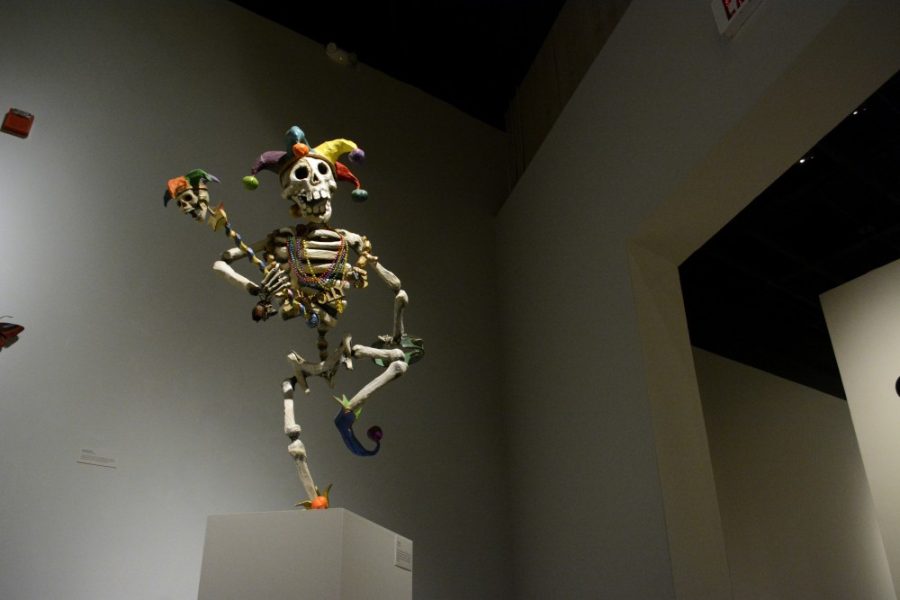The Tucson Museum of Art displays Hank Tusinski’s Día de los Muertos-inspired exhibit, “Banda Calaca,” as Day of the Dead approaches.
Laura Cortelyou, director of PR and marketing for the Tucson Museum of Art, shared what the exhibit—which started on Sept. 26—is. “The work features 15 nearly life-size, free-standing, paper mache skeletons playing in a mariachi band.”
According to Cortelyou, the exhibit strays from traditional Día de los Muertos representation due to the fact the artist, Hank Tusinski, is a Zen Buddhist. The exhibit includes photographs of Mexico and an altar depicting people he met throughout his travels in Mexico. These Mexican journeys inspired his “Banda Calaca” works.
Tusinski started working on the pieces for “Banda Calaca” in 2012. He said his work primarily focuses on the spiritual beliefs of Mesoamerica and of its indigenous communities. Tusinski traveled to Michoacán, one of Mexico’s southern federal states, for his inspiration.
“What motivated this whole thing is the question of life and death,” he said. “[The question] of who are we and what are we doing while we are on the planet. There’s something about the way I felt in indigenous communities—there is a sense of connection to who they are and what they’re doing on the planet.”
The P’urhépecha, the indigenous people of Michoacán, celebrate the Festival of the Spirit. Their Día de los Muertos celebration focuses less on the physical bodies and more on the spirit that goes on and continues after the physical life.
Tusinski exuded pure joy as he spoke about the installment of his exhibit at the museum. He said he always dreamed of displaying this specific work at the Tucson Museum of Art. He wanted a space where he could have the skeletons seen from all angles so that guests could see every aspect of the work.
The band of skeletons was inspired by the villages in Michoacán, Tusinski said.
“It seemed that in every little town, no matter how big it was, had a band,” he said. “It could [even] be the grandmother and the nephew, but there was always this idea of celebrating life with music. And the thing with music is, it has to be present to be made. You have to be there.”
Tusinski said the moral of the exhibit is simple, “Be kind.” During the exhibit’s construction, Tusinski said he never really considered what he wanted viewers to take away from it.
“I think if you have too much of a message that you are trying to put across, it becomes propaganda—it becomes narrow,” he said. “But at the same time, if anything, I would want people to go away [from the exhibit] with less than they came. To go away with less fear, like, ‘maybe I can have a little bit more levity in my life,’ or ‘I can take things a little less seriously.’”
Julie Sasse, the chief curator at the Tucson Museum of Art, said Tuniski’s work represents aspects of life and death we all should strive to recognize.
“His works remind us to celebrate life in death, to honor the past in the present and to embrace the universality of spiritual opens,” Sasse said.
The exhibit runs at the Tucson Museum of Art until Jan. 3, 2016.
Follow Alex Angeles on Twitter.









